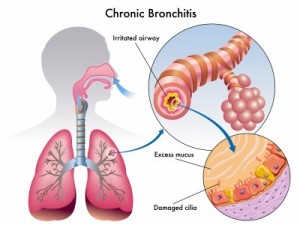
I was originally thinking of writing this as an article for the fourth leading cause of COPD and it’s associated diseases, emphysema and chronic bronchitis. But the more I thought about it the more I realized that the household cleaners that we routine use have many health hazards beyond lung diseases.
Some of the most toxic chemicals around hang out in our kitchen, bathroom and laundry. They typically pose a serious threat to health for everyone. Some of these can cause immediate, acute problems like asthma, coughing and heart palpitations and for people with COPD can even be fatal.
The most acute responses are seen with drain cleaners, oven cleaners and toilet bowl cleaners that are acidic in nature. Both bleach and ammonia are each acutely toxic and together form extremely dangerous, lung damaging gases.
The next most noxious toxins are some of the fragrances added to laundry detergents and fabric softeners that are made of chemicals containing phthalates. About 1/3 of all synthetic fragrances are in this category. They are known to cause asthma, cancer, hormone and reproductive problems and are neurotoxic.


Danger – highly toxic
Poison – highly toxic
Warning – toxic
Caution – slightly toxic
There are no Federal regulations, no safety standards and no testing data nor notification requirements for household cleaners. Even when the amount of toxic chemicals in any one cleaner is small, when combined with other toxic products and used regularly, they can pose serious health problems. Only the following words are required and products saying this on the label should be avoided.
But that’s not all. Be alert about green products too. Natural and eco-friendly are meaningless and even biodegradable only has meaning depending on the time involved. Biodegradable in 3-5 days is good; biodegradable in 30-50 years is not.
So what can you do to reduce the amount of toxic chemicals in your home? First of all, remove the most toxic substances, like oven cleaners and drain cleaners from your home as soon as possible. These should be taken to your local toxic waste disposal facility to be handled safely for you and the environment.
Next, buy “greener” products or at least buy regular products without fragrances. These are fairly easy to find for doing the laundry and for washing dishes. You can buy concentrated commercial green products and dilute them, which will save you money.
Learn to make your own cleaning products. Basically you can clean almost anything with various combinations of Borax, salt, washing soda, baking soda and vinegar. Not only are these products non-toxic they are incredibly inexpensive. Plus buying them in bulk reduces plastic waste. Here are two books that cover it all and contain tons of cleaning recipes for everything in your home.
Disclaimer: This blog is not intended to be a substitute for personal, professional, medical advice, diagnosis or treatment.



Leave A Comment